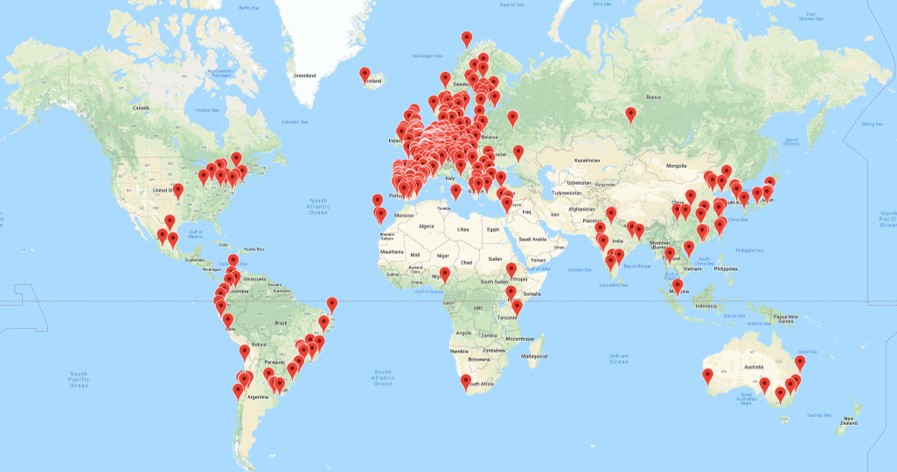Statistics
Although statistics are not an exhaustive tool to describe the impact and success of graduates in Electronics Engineering, that is anyhow widely witnessed by Alumni and employers, this numerical data can help to objectively highlight some performance. The most revealing data, taken from the official databases of POLIMI and of the MIUR (the Italian Ministry of Education, University and Research), with minimal fluctuations between the years in which they are sampled, isshown below.
Enrolments are stable over the years and slightly increasing, both for the B.S.E.E. (bottom left) and the M.S.E.E. (bottom right, note that the 2019/20 academic year’s data contains only the first semenster, while enrollments at the second semenster, March 2020 is still missing).

The rate of withdrawals in the B.S.E.E.’s degree is 27% and falls to 6% in the M.S.E.E.’s degree. It should be noted that the origin of students who access the M.S.E.E.’s degree is assorted: about 64% comes from the three-year Laurea degree (B.S.E.E.) in Electronics Engineering, 14% from other Laurea (Bachelors) degrees at POLIMI, 9% from other Italian universities, and 13% from abroad. This makes the community of students at the Laurea Magistrale (M.S.E.E.) well balanced and stimulating.
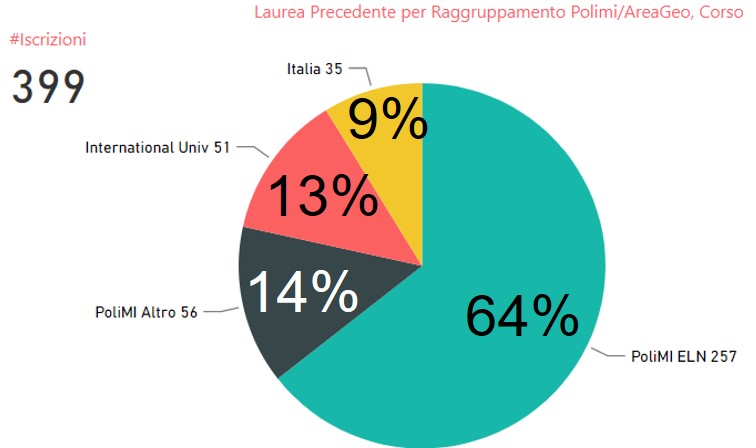
The average distribution of grades does not show anomalies. In the M.S.E.E.’s degree, the average grade is shifted towards higher grades compared to an almost homogeneous distribution in the Laurea B.S.E.E.’s degree, with a good percentage of excellence (on average 8% report an average mark higher than 30/30, i.e. many have laude). The distributions of the final grades are shown below (note that the 2018/19 academic year’s data is still incomplete): about 40% of students get a final grade <100/110; about 40% get a grade between 100/110 and 109/110; and about 10% get 110/110 and 5-10% the laude.
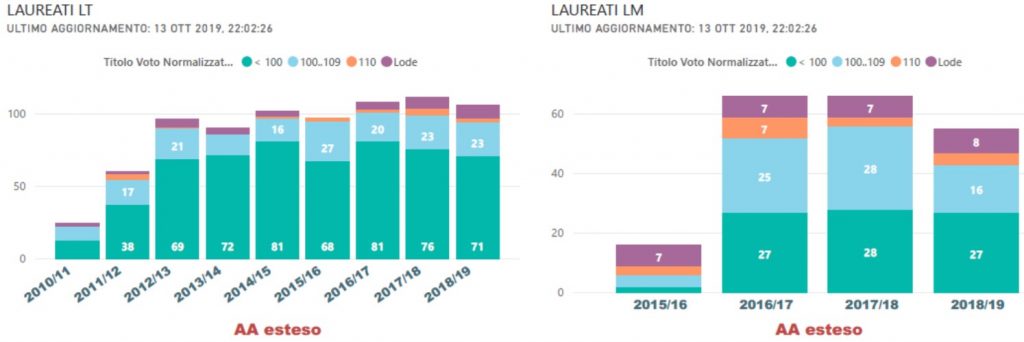
The ratio between students and teachers is between 10 and 13 and the values of the indicators of the teachers quality, according to the parameters of the MIUR, are between 1.1 and 1.2, compared to an average of 1.0 of other universities in the same geographical area. The overall percentage of satisfied undergraduates in the B.S.E.E.’s degree programme is between 84% and 88%.
The percentage of female students (15%) is in line with other Study Programmes (10% Mechanical Eng., 14% Computer Science, 15% Aerospace Eng.), but it is low and with no motivation, leaving ample room for better gender balance.
As confirmed by many companies, the employment rate of ELectronics Engineers within four months after graduation is 97% for the Laurea Magistrale M.S.E.E.’s Degree, of which more than 70% within one month.

It is also interesting to note that the first average salary (1,807 €) is higher than the average of other Master’s degree at POLIMI (1,600 €).
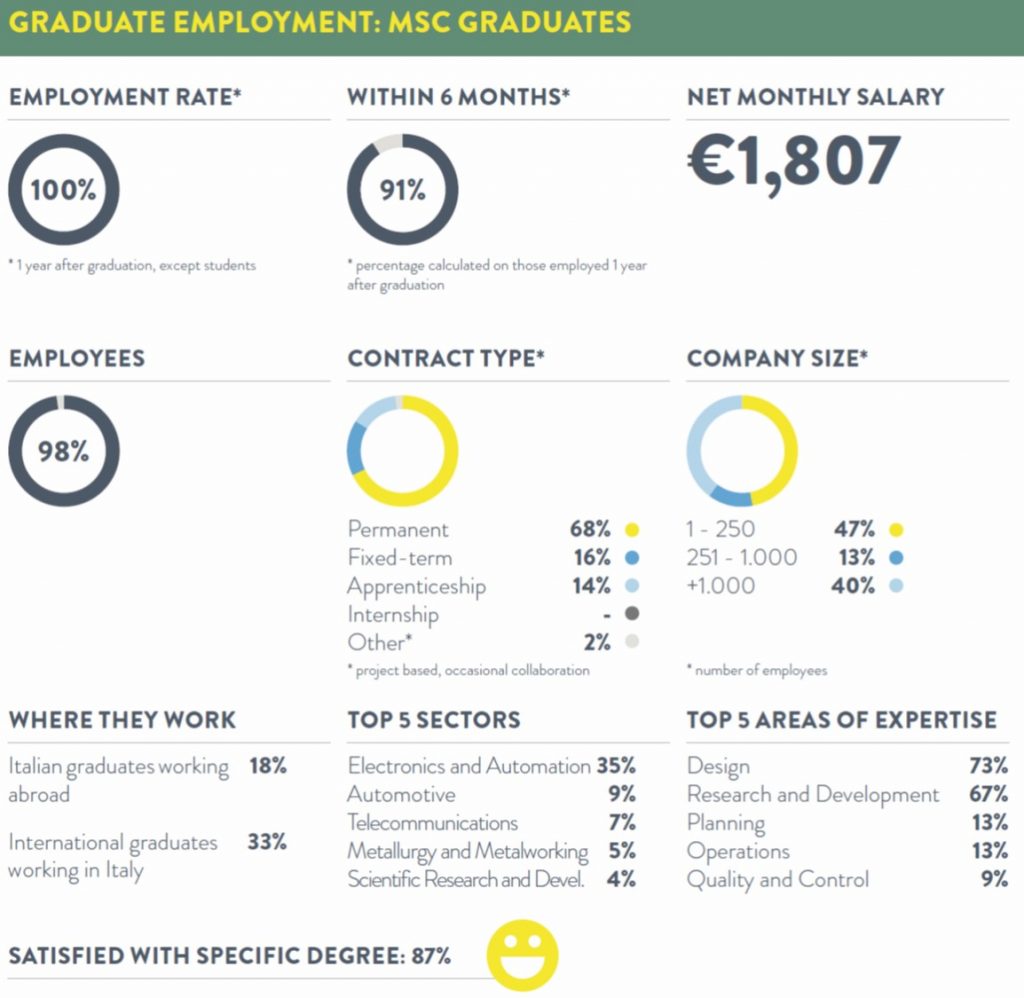
The labour market for Electronics Engineers is extremely positive and gives many opportunities and rewards.
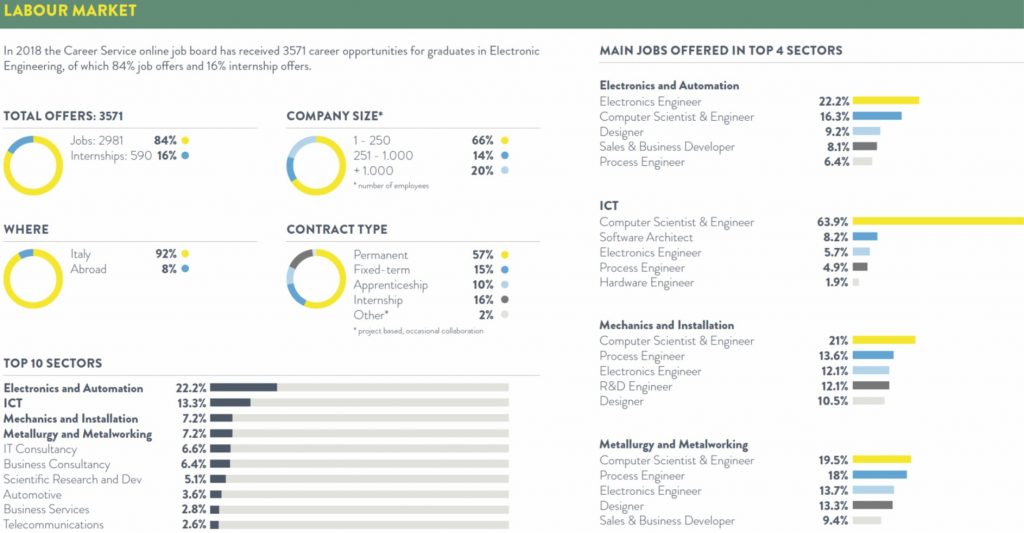
The degree of satisfactions given by students about teachings and activities is extremely high (always higher than 3 out of 4), both at the Laurea and at the Laurea Magistrale in Electronics Engineering.

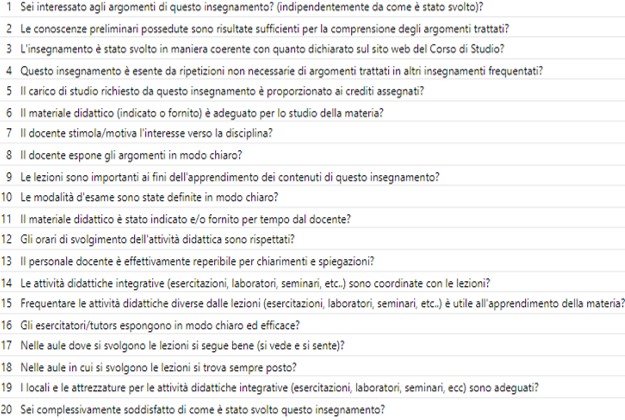
Eventually, the outgoing internationalization programme allows student to spend an educational period abroad, in another University, and even to get a Double Degree together with another University all over the World.
